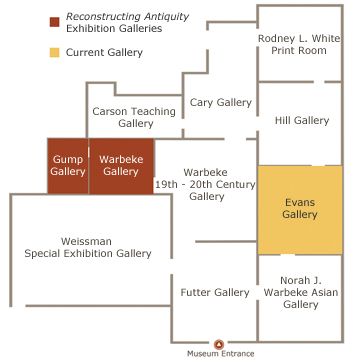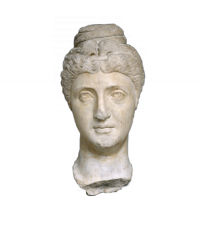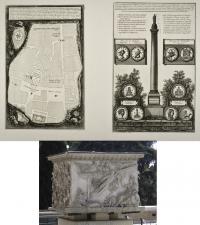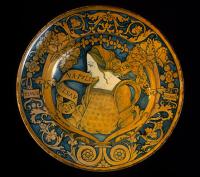Portrait of Faustina the Elder
Learn more about the object below
Faustina the Elder's life as an eternal icon began with her death in 141 CE. Her husband, the Emperor Antoninus Pius, celebrated the life of his beloved consort with her deification, assigning her a celestial identity that rendered her a goddess. Antoninus Pius joined his divine spouse in the immortal realm upon his own death in 161 CE. The commemorative column erected in the Roman Forum, shown at right, illustrates the couple borne aloft on the wings of eternity and flanked by personifications of Rome and the Campus Martius, its original location within the city.
Along with other Roman empresses, Faustina the Elder is most frequently identified by her unique hairstyle. Fashion and the toilette were inextricably linked with female identity, and Roman women may have adopted imperial coiffure in an attempt to publicly imbue themselves with the same virtues embodied by admirable empresses. An alteration in hairstyle could also serve to forge a civic identity unfettered by the past. Faustina the Elder's daughter Faustina the Younger, on display alongside her mother in this installation, is said to have adopted a coiffure entirely different from her mother's in order to establish her independence.
The elevated status of civic goddess was not the only lofty identity Faustina the Elder came to occupy after her mortal death. Many of the coins manufactured under Antoninus Pius’s auspices assimilated the Empress to AETERNITAS, a state paramount to the survival of the imperial legacy. In an example displayed along with her second century CE portrait bust in this exhibition, Faustina is shown proffering a globe, a symbol of her husband’s worldly dominion, and a phoenix, indicative of her transformation to divine status.
As a testament to Faustina the Elder's highly regarded reputation, artists and craftsmen even centuries later utilized her name as an appellation for worthy wives. The majolica plate produced in 16th century Italy and illustrated at right depicts a young woman mimicking the profile view so common in imperial coin imagery, her elegant features complimented by classicizing drapery. The banner that unfurls behind her head reads "FAUSTINA PULITA E BELLA” (pure and beautiful), suggesting that the woman here was an early modern namesake of the virtuous Empress Faustina the Elder. Cornucopias frame the portrait, linking the subject to ancient Roman symbols of abundance and marital fecundity.
Label texts by Maureen McVeigh (MHC '10).






